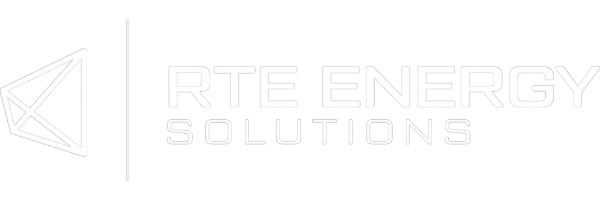Written by Steve Harriman, Senior Director of Business Development
Cleaning your Heating, Ventilation and Air Conditioning (HVAC) coils is essential to ensure that your HVAC system functions efficiently and lasts for a long time. Why? Well, the internal surface area of HVAC coils provides an ideal breeding ground for bacteria and fungi. The buildup of biofilms, dust, grease, hydrocarbons, and other fouling agents can quickly choke an air handling unit (AHU). This buildup means that the compressors and fans must work harder to push or pull air through the coils. In addition to this, thermal transfer is inhibited by biofouling which makes the system work even harder to achieve its set point.
Biofilm growth within HVAC systems is a major issue for building owners and operators alike. They can cause a range of problems including reduced efficiency, increased energy bills, lowered equipment lifespan as well as health concerns. These issues are especially pressing in hospitals where airborne pathogens can be deadly. In order to combat this problem, engineers have developed different techniques such as HVAC coil cleaning regimes which are essential in maintaining efficient HVAC operation.
Types of HVAC Coils
The two types of HVAC coils in buildings are evaporator coils and condenser coils. Both types are essential parts of any air conditioning system, but they work in very different ways. We'll start by taking a closer look at evaporator coils. They are designed to remove heat from the air, therefore cooling the air to be spread through the building. While the evaporator coils work to cool the indoor air, the condenser coils complete the cycle by releasing heat into the outdoor air. This process is critical for maintaining a comfortable indoor temperature and ensuring that the HVAC unit operates efficiently.
Truth: Debris can Accumulation in Both HVAC Coils
One crucial aspect of an HVAC system that can significantly impact the system's performance – debris accumulation within the coils. The truth is, debris in the HVAC unit accumulates in different ways due to variations in air exposure that result from outdoor elements or filters.
HVAC condenser coils are directly exposed to outdoor air and elements, making them more susceptible to gathering dirt, debris, and grime quickly. This buildup may lead to decreased efficiency and even system failure if left unchecked. On the other hand, evaporator coils are only in contact with filtered air. However, particulates can bypass filters over time resulting in a coating of dirt on these coils leading to expensive fixes if not resolved immediately.
Truth: The Vast Majority of Internal Coil Surface Area is Completely Inaccessible for Cleaning
Traditional cleaning methods have their limitations, especially when it comes to penetrating completely through the coils. This is particularly true for coils that are deeper than 6 inches, which are commonly found in HVAC units and refrigerators. These coils can be difficult to clean because of the compact spacing between fins, with space measured in mere millimeters between each fin. As a result, most of the internal coil surface area remains inaccessible for cleaning.
Top Considerations When Choosing an HVAC Cleaning Method
The importance of maintaining clean coils in your HVAC system cannot be overstated. Regular cleaning can help to improve energy efficiency, increase the lifespan of your equipment, and reduce the likelihood of costly breakdowns. However, there are a number of different approaches to coil cleaning that you should consider before developing a plan for your preventative maintenance program.
Firstly, it's important to consider the cadence at which you intend on performing the cleaning. This will depend on a number of factors such as the environment and usage patterns of your HVAC system. For example, systems operating in dusty or polluted environments may require more frequent cleaning than those in clean environments. Additionally, systems that are heavily used may require more frequent cleaning than those that are used less often.
Secondly, you should consider the method used for coil cleaning as this could have a significant impact on both the environment and technicians. It is crucial to note that there are several methods available for coil cleaning, including chemical-based ones. However, these methods could be harmful to the environment and pose health risks to technicians who use them frequently. Luckily, there are eco-friendly solutions that are safe for both humans and nature.
The last thing to keep in mind is that HVAC coils are delicate and can easily be damaged if not handled properly. Therefore, ensuring the method you choose won't damage the coils is key to preventing expensive repairs in the long run. There are several methods for cleaning HVAC coils, including chemical cleaning and pressure washing. While both methods can effectively clean the coils, they also have their own risks of damaging them. Chemical cleaners can corrode or weaken the fins on the coil if too strong or left on too long. Pressure washing can bend or flatten fins if too much pressure is applied. It's important to use a gentle approach when cleaning your HVAC coils to prevent any damage.
Blue Box Air Vs. Traditional HVAC Coil Cleaning Methods
Blue Blue Box Air is a revolutionary solution that promises to transform the way we maintain our HVAC systems. This sustainable, odorless, pH neutral enzyme offers nearly 100% full penetration across the entire depth of any HVAC coil or heat wheel, completely removing biofouling without having to turn the equipment off. What's more, Blue Box Air is environmentally safe and does not require any toxic chemicals or harsh cleaning agents.
Unlike traditional coil cleaning methods which can be time-consuming and costly, Blue Box Air is designed to provide efficient and effective results without downtime. The enzymes in this innovative product break down organic matter such as bacteria, mold and algae which are commonly found in HVAC systems. By eliminating these contaminants, Blue Box Air improves indoor air quality by reducing allergens and bacteria levels while also improving equipment efficiency.
Have questions? Feel free to reach out to me to get more information and discover if a pilot of Blue Box Air technology would be beneficial to you.
About the Author: Steve

Steve is a business development professional with 20 years of proven experience in business development, client satisfaction, and customer retention. He was previously Sales Director for Cyclone Lighting in Ontario and also worked at King Luminaire and Stresscrete Group, where he served as Sales Manager for the U.S. Northeast. Prior to working in the lighting Industry, Steve was a C.P.G.A. Golf Club Professional with Professional roles at Royal Niagara, Carlisle, Pine Knot and Sunningdale Golf & Country Club. Book a meeting with Steve.
